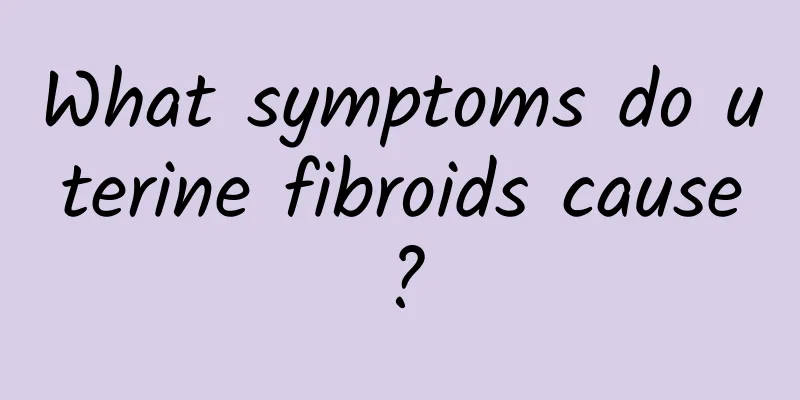What symptoms do uterine fibroids cause?

|
Uterine fibroids are one of the most common gynecological tumors. Their occurrence is related to factors such as hyperplasia of uterine smooth muscle tissue, female endocrine disorders, and high or low levels of estrogen. Uterine fibroids can cause many uncomfortable symptoms. So, what symptoms can uterine fibroids cause? What symptoms do uterine fibroids cause? Because the occurrence of uterine fibroids can have a very serious impact on women, it is necessary to treat them in time to avoid the severity of the disease, which not only causes serious harm to women, but also increases the difficulty of treatment. Women with uterine fibroids will have many uncomfortable symptoms, so what symptoms will uterine fibroids cause? Patients with uterine fibroids generally have the following three typical symptoms: 1. Uterine enlargement: From a gynecological perspective, it should be differentiated from pregnancy. If there is enlargement or symptoms, surgical treatment should be considered. Usually, the standard for surgical treatment is that the uterine fibroids and the uterus reach the size of a two-and-a-half-month pregnancy, or even if it is not this size, but the menstruation is very heavy, and anemia or degeneration caused by ineffective drug treatment should be considered. 2. Menstrual disorders: For example, the change of menstrual volume, different people have different standards. The amount of menstrual volume is mainly compared with the patient himself; under normal circumstances, five sanitary napkins are used during menstruation, and then ten or twenty pieces are used, which is a disorder. 3. Lump: The female uterus is usually located under the pubic bone in the pelvic cavity and is not easy to touch. If the fibroids grow larger, a lump may be felt or there may be pressure, frequent urination, constipation, etc. Clinical diagnosis of uterine fibroids In the early stage of this disease, there are no symptoms. Most of the fibroids may be uterine fibroids. After a certain degree of symptoms or masses appear, they are discovered when the patient comes to the outpatient clinic or for physical examination or gynecological examination. The diagnosis can be made based on clinical manifestations and gynecological examinations with the help of advanced instruments and equipment such as color Doppler ultrasound, CA125, CA199, etc. Kind tips: |
<<: Does the ovarian cyst still need treatment after menstruation?
>>: How to treat premature ovarian failure better
Recommend
How much does it cost to cure pelvic peritonitis?
How much does it cost to cure pelvic peritonitis?...
What are the clinical manifestations of perimenopausal syndrome?
The clinical manifestations of female perimenopau...
Pelvic inflammatory disease still hurts after 10 days of anti-inflammatory injections
If you still have pain after 10 days of pelvic in...
Bananas are not good for weight loss, only oatmeal can help
Japanese actress loses weight successfully, spark...
Avoid using drugs indiscriminately in the treatment of irregular menstruation
With the accelerated pace of life, it is normal f...
Can patients with adnexitis get pregnant?
The fallopian tubes and ovaries are the appendage...
Do you know the symptoms of cervical hypertrophy?
Cervical hypertrophy is a type of chronic cervici...
Abdominal pain, uterine fibroids, what to check for color Doppler ultrasound, uterine fibroids, can abdominal B-ultrasound be used to detect them?
Abdominal pain is a common phenomenon and may be ...
How to relieve fatigue caused by changing seasons? 5 great nutrients! Nutritionist: Supplementing zinc and iron can help you get rid of poor complexion and lack of energy
With the recent change of seasons, the temperatur...
The choice of treatment for primary dysmenorrhea requires correct
Dysmenorrhea is divided into primary dysmenorrhea...
Family members should understand the advantages of micro-tube minimally invasive abortion surgery
In life, abortion is an increasingly common surge...
Pathogenesis of menopausal functional uterine bleeding in TCM
Traditional Chinese medicine believes that the ca...
What are the common symptoms of ectopic pregnancy?
Pregnancy is a great joy for married women, but i...
Do you know how to care for cervical hypertrophy?
If you want to treat cervical hypertrophy, you mu...
Preventing ectopic pregnancy can allow patients to try in vitro fertilization
There are many ways for women to prevent ectopic ...









